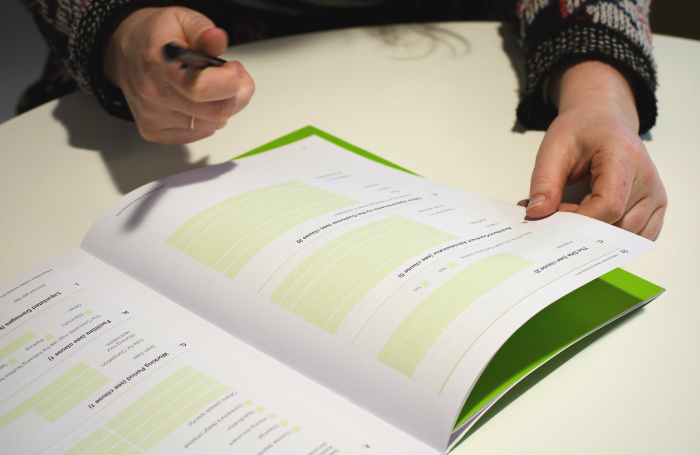Professional appointments are frequently difficult for architects to navigate. Getting a contract wrong can have extremely costly consequences for a practice and, in an increasingly challenging and competitive climate, signing up to potentially punitive terms is all too easily done.
Will Buckby is a Partner at , construction law specialists and ���������� Specialist Practice Consultants. Buckby reports that he has witnessed contracts growing increasingly tougher in terms of terms imposed on architects (and consultants in general).
There are several facets to this hardening. One is a growing mismatch between Professional Indemnity Insurance (PII) and the terms of appointment contracts. Historically, Buckby points out, contracts have mirrored PII. That has meant that when architects entered into an appointment they could be confident that, in the event of negligence, a mistake on their part, or a breach of contract, they had insurance cover behind them. The doomsday scenario of having to put your hands in your pockets or even cease trading is not a possibility.
“Terms have become so much more onerous that they don’t sit within the realm of typical PII,” Buckby states. “They ask much more of the architect. That leads to increased potential for breach of contract, without any insurance to cover the losses."
He sees this as having crept in since the last UK recession, a consequence of economic slowdown. With less work around for all professionals, risk-averse clients introduce increasingly conservative terms while consultants sign them as they need the work. In the event of a big claim, practices will invariably go into administration. Jobs will be on the line.
“Where contractors have plant, equipment and warehouses, practices tend not to have many assets,” he warns. “Architects’ assets are people.”
At the same time, Beale & Co are also noticing a greater scope of responsibility being embedded in contracts. In a nutshell, architects are being required to do more for less.
“Monitoring of the work is one example,” Buckby states. “Contracts stipulate an ongoing role in which architects must shoulder responsibility for monitoring construction or, in some cases, take responsibility for the project as a whole.”
Of course, practices do offer project-management services to varying degrees, and expect to visit sites and work cooperatively with contractors. However, it is the degree of responsibility and liability that is of concern, and the degree to which those signing the contract understand it. Buckby also notices a discrepancy between how an architect will price a project and the contract that is presented to them.
“Nine times out of ten the architect will suggest a price based on design, or the expectations of a standard ���������� appointment. Yet they will receive a bespoke appointment in which they may have to oversee design commissioned by third parties or the client. They have priced on one assumption, then they are required to take on a risk that bears no resemblance to what they had expected.”

Appreciating the consequences of the contract’s wording might seem too obvious to point out. But it is a common cause of undoing, in Buckby’s experience. Taking legal advice on a non-standard contract should be a given.
He often notices a standard ‘deleterious materials’ clause being amended into a much more onerous ‘fitness for purpose’ clause, for example. Where a deleterious materials clause would rule, reasonably, that an architect should not specify anything damaging to health and safety, a fitness for purpose clause might stipulate much more specific project objectives, which may not even lie within the architect’s control: a particular year-round temperature or a certain level of lighting.
“Professional indemnity insurance typically excludes matters arising from fitness for purpose provisions. That’s why we don’t like them,” Buckby states. “We will advise clients to delete them.”
If a practice were, however, to find themselves engaged in a project with fitness for purpose stipulations it is a case of managing the risk, he counsels.
“Ensure you find out the purpose and all its ramifications. Get the purpose established very clearly to leave no doubt whatsoever that you are providing a design that definitely covers it.”
He advises every practice to draw up a risk register and to use an effective project management tool, irrespective of their satisfaction with the contract.
Despite the increasingly onerous nature of many a contract’s terms, architects should not forget that clients are generally open to negotiation, despite appearances. After all, the architect is in this situation because the client wants their services. Do not be intimidated out of negotiating and remember that perseverance in negotiations pays off.
“All employers, and their solicitors expect there to be some negotiation,” Buckby reminds us. However, at the end of the day, architects should remember that if negotiations have been exhausted and a contract places them outside the security of their insurance, they must consider walking away.
The ���������� provides a Practice Note containing guidance on Professional Indemnity Insurance, which was revised and updated in December 2019.
The ���������� also offers a suite of contracts, including the Professional Services Contract, which are produced in consultation with legal experts, and contain clear, standard terms to aid both client and architect.
Thanks to Will Buckby, Partner, Beale & Co.
Text by Matt Milton. This is a Professional Feature edited by the ���������� Practice team. Send us your feedback and ideas.
���������� Core Curriculum Topic: Procurement and contracts.
As part of the flexible ���������� CPD programme, Professional Features count as microlearning. See further information on the updated ���������� CPD Core Curriculum and on fulfilling your CPD requirements as an ���������� Chartered Member.



